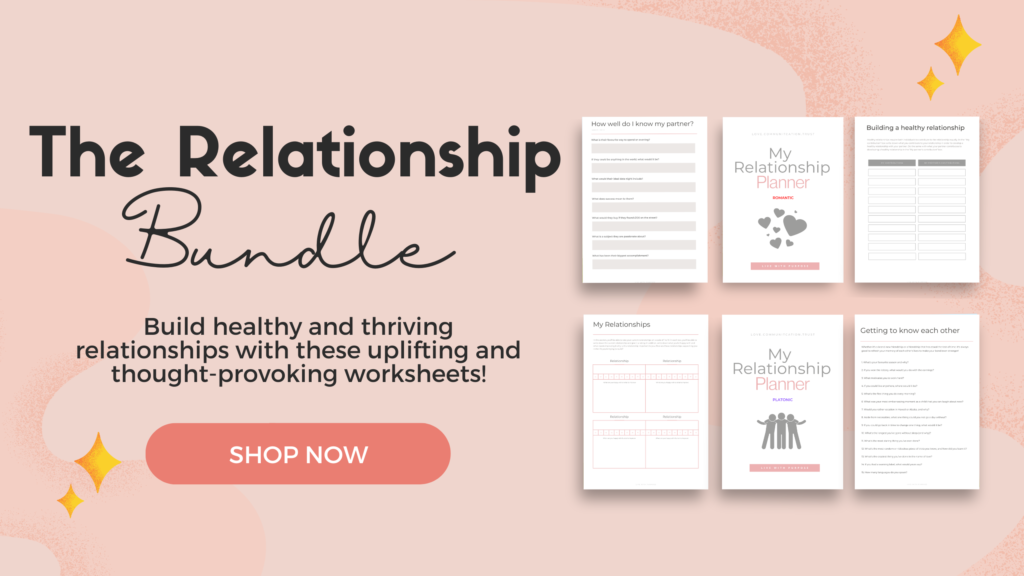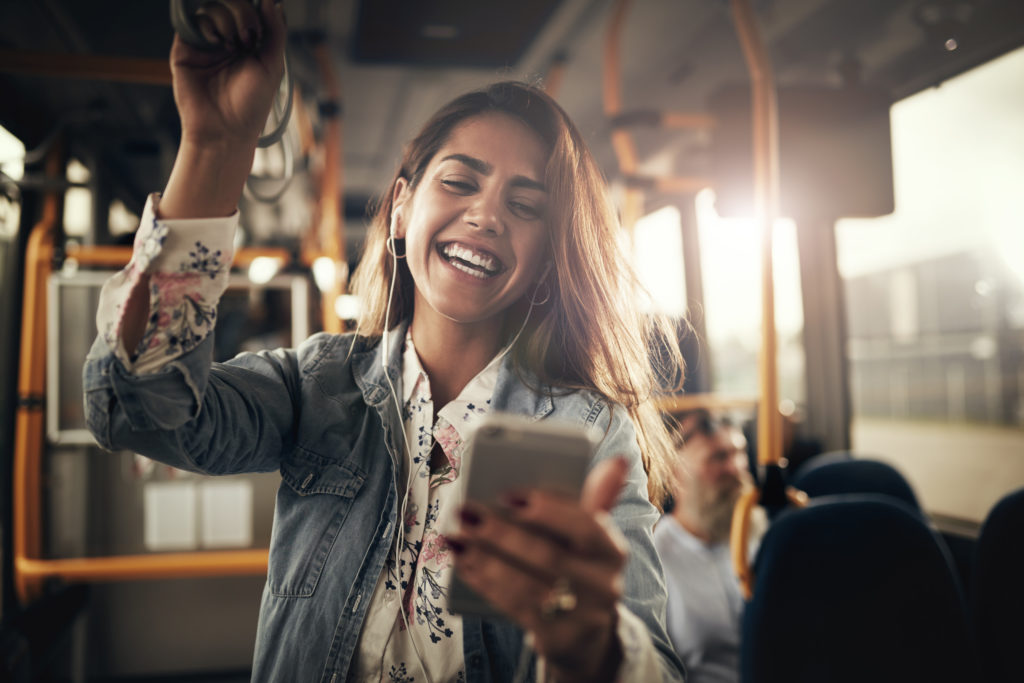
In a world that often emphasises the value of social connections, there’s an important distinction to be made between being alone and feeling lonely.
Many people associate solitude with a sense of isolation or sadness, but the truth is that being alone can be a fulfilling and rejuvenating experience. 😊
In this blog post, I will explore the nuances of being alone versus feeling lonely, understanding the importance of solitude, and embracing the positive aspects of both states.
Let’s get to it. 💕
The Difference Between Being Alone and Feeling Lonely:
Being Alone:
Being alone is a state of physical solitude, where you find yourself without the company of others. It can occur by choice or as a natural consequence of circumstances. Spending time alone provides an opportunity for self-reflection, relaxation, and personal growth.
It allows you to engage in activities that bring you joy, pursue hobbies, or simply enjoy a moment of peace. Being alone can be a deliberate choice, a time to recharge and connect with oneself. 🥰
Feeling Lonely:
Loneliness, on the other hand, is an emotional state that arises from a perceived lack of meaningful connections. It’s possible to feel lonely even in a crowded room if the connections are superficial or unfulfilling.
Loneliness is often characterised by a sense of emptiness, isolation, or a longing for deeper human connections. It’s a complex emotional experience that can impact mental and physical well-being. 😟

Embracing the Positive Aspects of Being Alone:
1. Self-Discovery:
Being alone provides an opportunity for self-discovery. It allows you to explore your thoughts, feelings, and interests without external influences. Use this time to reflect on your goals, values, and aspirations. Self-discovery is a crucial aspect of personal growth and can lead to a deeper understanding of oneself.
2. Independence:
Embracing solitude fosters independence. When you’re comfortable being alone, you become more self-reliant and less reliant on others for your happiness. This independence can empower you to make decisions based on your own needs and preferences, leading to a more authentic and fulfilling life. 🥰
3. Creativity:
Solitude often sparks creativity. When you’re alone with your thoughts, you have the mental space to generate new ideas, think critically, and engage in creative pursuits (yaay). Many artists, writers, and innovators find inspiration in moments of solitude, leading to the creation of meaningful and impactful work. 🎨
4. Rest and Rejuvenation:
Being alone allows for rest and rejuvenation. In a world filled with constant stimuli, taking time for solitude can be a form of self-care. It provides an opportunity to relax, recharge, and focus on activities that bring you peace and joy, contributing to overall well-being.

Addressing the Challenges of Feeling Lonely:
1. Cultivating Meaningful Connections:
If loneliness arises from a lack of meaningful connections, focus on cultivating relationships that nourish your soul. Seek out individuals who share your values and interests. Join clubs, organisations, or communities where you can meet like-minded people. Focus on getting yourself out there. Quality connections are often more fulfilling than a large social circle. 🫂
2. Volunteering and Giving Back:
Engaging in volunteer work or contributing to your community can alleviate feelings of loneliness. By helping others, you not only make a positive impact on the world but also connect with individuals who share a common purpose. Volunteering provides a sense of belonging and fulfillment.
3. Seeking Professional Support:
If loneliness becomes a persistent and overwhelming emotion, maybe consider seeking professional support. A therapist or counselor can provide guidance and a safe space to explore the root causes of loneliness. Addressing these issues with professional help can lead to a more fulfilling and connected life. 🫶
Finding Balance:
The key to a fulfilling life lies in finding a balance between being alone and fostering meaningful connections. Embrace solitude as a time for self-discovery, creativity, and rejuvenation. At the same time, actively cultivate relationships that bring joy and fulfillment. Recognise that both states are essential for a well-rounded and satisfying life. 💕
Conclusion
Being alone and feeling lonely are two distinct experiences, each with its own set of opportunities and challenges. Embracing solitude allows for self-discovery, independence, creativity, and rest. However, if loneliness creeps in, it’s crucial to address it by cultivating meaningful connections, volunteering, or seeking professional support. You are not alone. ❤️
Understanding the nuances between being alone and feeling lonely empowers you to navigate both states with intention and purpose. Ultimately, finding a balance between solitude and social connections contributes to a rich and fulfilling life. Embrace the positive aspects of being alone, foster meaningful connections, and savor the journey of self-discovery in this beautiful dance between solitude and companionship.
Pin this post for a reminder 📌 👇

Related Blogs
Things to Say “No” to for you to Live a Happier Life
How to Stop Settling For Less Than You Deserve
How to Become the Best Version of Yourself: A Guide For 20-Somethings
How different do you think your life would be if you were able to move the needle on your dreams every single day? 🤔
It’s tempting to believe that focusing on one big goal that’s going to make us happy is the answer but in reality, it forces us into inaction. It’s knowing how to improve your life one day at a time that’s going to have a huge impact on us.
Think about it, how often do you get overwhelmed when you think about all the things that you have to do?
You get annoyed and are riddled with anxiety because you think “ How on Earth am I going to get all of this done”. When really you should be asking yourself “ What first step do I need to take in order to get to my end goal?” – The better quality questions you ask yourself, the more quality answers you will receive. 😌
“If you start out with £100 at the beginning of the year and you were able to increase what you have by 1% every single day, at the end of that year, you would have £3,778.34 = £100 * (1+1%)^ 365. That is 37.78x what you had at the beginning of the year. Get that 1% every day”Zappos
Focus on that 1% each day. Read those 5 pages, do that extra rep, drink that extra litre of water. It may not seem like much at the moment but these small moments accumulate over time.

*This posts contains affiliate links, meaning I make commission through qualifying purchases at no extra cost to you. Please read my disclaimer for more info*
“Habits are the compound interest of self-improvement” – James Clear. Just as money multiplies through compound interest, the effects of your habits multiply as you repeat them.
Impatience often calls for small changes to be dismissed because they don’t seem to matter as much in the moment of doing them.
Making changes and not seeing results fast enough can cause us to slip back into bad habits. Instant gratification is a killer. I think patience is one of the most underrated skills out there. If a lot more people were patient there would be a lot more successful people out there. 🤷♀️
Remember: If you practice yoga for 10 minutes every day that doesn’t mean you’re flexible. If you save £30 a month that doesn’t mean you’re a millionaire.
However, the accumulation of habits you implement will put you in better standing of becoming the type of person you are aiming to be. Here are a few ideas to implement daily into your routine that covers a few of the core areas of your life.
(Health, Family, Finances, Career/ Business, Recreation, Relationships, and personal growth)
1. Give yourself a reward
Too often people get hung up on the idea that self-care has to be a huge deal that involves weeks of planning or some sort of special occasion.
You don’t need to complete a huge milestone in your life in order to reward yourself. It’s much healthier mentally and physically to give yourself time off. Indulge once in a while, go to spas/retreats and holidays. 🏖️
You deserve a break, don’t glorify “The grind don’t stop” life where you’re working all the hours God sends and you have no clue when the last time you ate was.
Consider rewarding yourself as an emotional equivalent to hitting that refresh button. Try not to hit it only when you desperately need it, get into the habit of pressing it every day and give yourself something to look forward to. 😍
The more you acknowledge and reward yourself for all your successes (yes even the small ones), the more success you’ll have.
When you take the time to acknowledge the little actions you took toward your goals you are strengthening those actions. In doing so, positive emotions become associated with those actions making them more likely to turn into daily habits.

2. Start an exercise program
Want to feel healthier, have more energy and add years to your life? Then exercise.
The benefits of exercising are hard to ignore. Everyone benefits from exercise regardless of age, sex or physical ability.
An exercise program that is tailored to you specifically to your needs is a great way to stay physically and mentally fit.
The Department Of Health and Human Services recommends getting at least 150 minutes of moderate aerobic activity or 75 minutes of vigorous aerobic activity a week or a combination of the two.
Do you want to lose weight, build muscle or gain flexibility? Set clear S.M.A.R.T goals so you can gauge your progress.
RELATED: Ready to make your health a priority? Check out our Health Bundle
Make exercise a daily habit by giving it a cue, routine and reward.
Cue: What is the cue for you to start exercising?
Is it passing the gym on the way to work every morning? Is it boredom?
To figure out your cue to exercise write down these five questions the moment the urge hits.
Where am I? (e.g. at home)
What time is it? (e.g. 9:15 am)
What’s my emotional state? (e.g. bored)
Who else is around? (e.g.no one)
What action proceeded the urge? (e.g. wanting to eat the pizza in the fridge)
Write these questions out every day for 7 days, it will then be pretty clear what your cue is to exercise. The next step will be to make that cue more “attractive”. E.g. if your cue is walking past the gym equipment in the living room, put some gym equipment in more rooms that you frequent in. This will increase your chances of working out.
Routine: What is the outcome of the cue?
In this case, our subject matter is exercise. However what type of exercise will come from this cue? E.g. placing a yoga mat in your room will cause you to do yoga in this particular place.
Reward: What is your reward for after you exercise?
Rewards are powerful because they satisfy the craving. Is it your favourite smoothie after each workout? Then think about that smoothie and how you feel when you drink it and how satisfied you feel after. Eventually, that craving will it easier to push through your routine.
Check out our Health Bundle here 👉 HEALTH BUNDLE
3. Watch a TED talk/ Listen to a podcast
TED talks are short, inspiring and entertaining lectures from some of the world’s most inspiring thought leaders. Watching TED talks and listening to informative podcasts help broaden your perspective, thinking and attitude. When you watch people sharing their ideas on what worked and didn’t work for them you can instantly connect yourself with the life of the speaker.
TED talks/podcasts are easily accessible on any device and free. Meaning there are literally thousands of hours of inspiring content waiting to flow through your ears.
Next time you’re feeling deflated or stuck in life pop out your headphones and try out a podcast or TED talk.
Here are a few of my favourite TED talks for when I have a motivation drop:
https://www.youtube.com/watch?v=MmfikLimeQ8
https://www.youtube.com/watch?v=7sxpKhIbr0E
https://www.youtube.com/watch?v=7sxpKhIbr0E

4. Pick out a new healthy recipe
Hands up! Who has an issue with eating healthy at least 90% of the time? I know I do. Healthy eating matters even though staying on top of it can be difficult, especially with the convenience of junk food around every corner and the availability of it on apps.
When we eat well we sleep better, have more energy and better concentration. Overall, you will live a healthier and happier life. Contrary to popular belief, healthy eating isn’t about cutting out food – it’s about eating a wide variety of food in the right amounts to give your body what it needs.
Picking out a new healthy recipe that you want to try daily will put you in better standing of becoming a healthier person since you have already planned what you’re going to eat and when. This helps eliminate convenient junk food eating.
5. Have family time
Family is forever. However, it’s important to remember to keep the relationship with your family healthy. We often think that it’s about the quantity of time that we spend with our family when in reality its more about the quality of time we should be focusing on.
Having family time is important because you develop ties and bonds with your family members. Everyone wants a sense of belonging and security and by spending quality time together ensures that a deep, strong, family bond develops.
Here’s a list of activities to do with your family whether you have children or not:
✔️ Cook/ bake together
✔️ Confront family member’s fear together as a family ( whether it’s getting a spider out of the house or a fear of clowns, do it together)
✔️ Build a fort in the living room
✔️ Play a board game ( Try not to flip the board over if it’s Monopoly)
✔️ Do a science experiment
✔️ Have a movie night with homemade pizza
✔️ Go outside and have a water balloon fight
✔️ Make a collage of all your dreams and goals
Learn how to improve your life one day at a time by checking out our printables that focus on improving the 8 core areas of your life.

In summary
Don’t wait to be happy. Life is happening right now and there’s so much for you to be grateful for in this very moment. Your life is not just about one big goal that you need to accomplish in order to be happy and feel fulfilled.
Doing any of these points daily will lead to an increase in either a healthy body, healthy mind or healthy relationships which contribute to the core areas of your life. If you manage to do all 5 then good on you! I would love to know how well this impacted your life in a few months’ time.
Which Idea are you going to take action on today?
Pin this post for a reminder! 📌 👇

Related blogs
How to raise your standards and live your best life
Did you know that people on my email list sometimes get exclusive discounts on my products? Join the community and save yourself some coins!
Freshly-squeezed inspiration, and no-nonsense tips + tricks to improve your life delivered to your inbox weekly.
Subscribe to my newsletter
Subscribe
You're all signed up!
Be sure to whitelist our email address so that all the goodies make it to your inbox.
